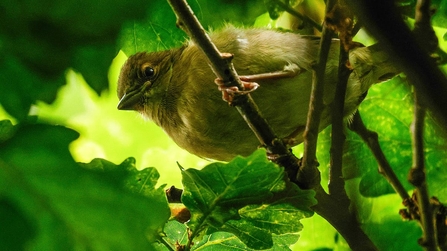UPDATE 13/12/24:
CORRECTION TO OUR ORIGINAL NEWS STORY:
Many apologies but in our original News Story below, we incorrectly stated that there had been no breeding records of hawfinch in Herefordshire for over 100 years. We had been unable to find any more recent data but we have since been contacted by members of the public and the county recorder for birds to inform us that there have been very recent records of breeding pairs in the county.
While we are extremely sorry to have made this error, we are thrilled to have been wrong! The hawfinch is a rare bird – on the ‘red list’ for Birds of Conservation Concern – so it has been very heartening to hear from people that that have seen individual birds as well as signs of breeding, such as juvenile birds, in their local area. Great news for Herefordshire!
The breeding hawfinches were recorded in a woodland Local Wildlife Site by local ornithologist Daniel Webb. Remarkably, this is the first breeding record of this species in Herefordshire in 140 years and is very significant as this bird is one Britain’s rarest woodland birds, with an estimated population of just 500 pairs: that’s around the same as all of Scotland’s golden eagles! These huge finches often nest in colonies so this record may indicate the presence of a previously unknown population in Herefordshire and the Welsh Marches.

